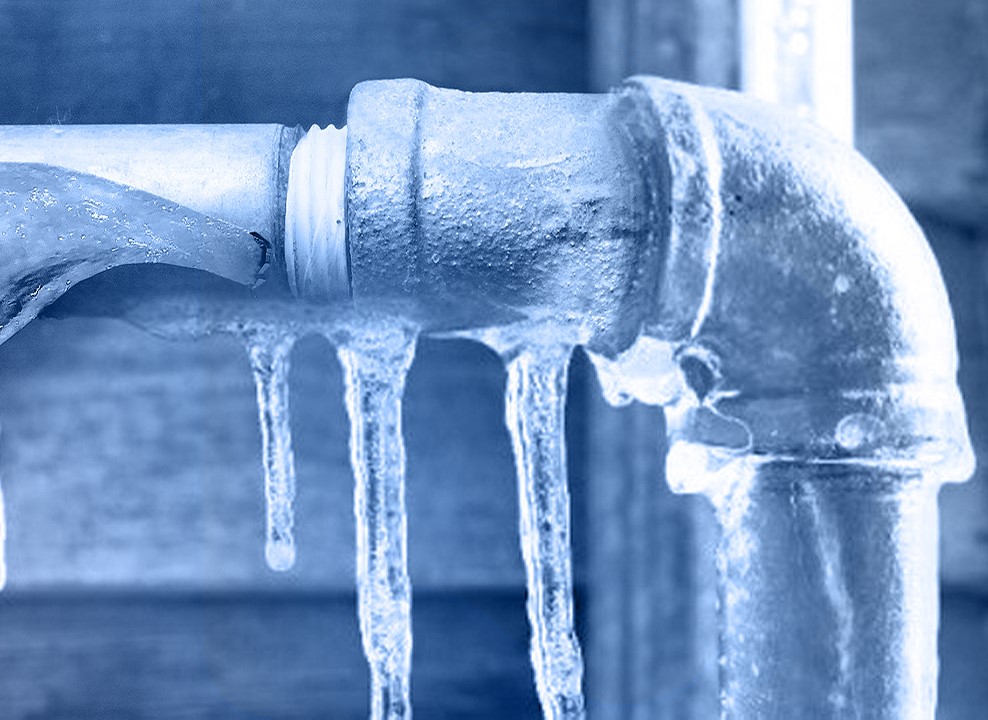How do you feel in relation to How To Avoid Freezing Pipes?

Winter can damage your pipes, specifically by freezing pipelines. Here's how to prevent it from happening and what to do if it does.
Introduction
As temperature levels decline, the danger of icy pipes rises, potentially resulting in costly repair work and water damages. Understanding exactly how to stop frozen pipelines is important for house owners in cool climates.
Avoidance Tips
Shielding vulnerable pipes
Wrap pipelines in insulation sleeves or make use of warmth tape to safeguard them from freezing temperature levels. Focus on pipelines in unheated or outside areas of the home.
Home heating techniques
Maintain indoor spaces adequately warmed, specifically locations with pipes. Open closet doors to enable cozy air to circulate around pipes under sinks.
Just how to recognize frozen pipelines
Seek lowered water flow from faucets, uncommon odors or noises from pipelines, and noticeable frost on exposed pipelines.
Long-Term Solutions
Structural modifications
Think about rerouting pipelines far from outside walls or unheated locations. Add added insulation to attic rooms, basements, and crawl spaces.
Upgrading insulation
Purchase high-grade insulation for pipelines, attics, and walls. Correct insulation helps maintain consistent temperatures and reduces the risk of frozen pipes.
Protecting Exterior Plumbing
Garden hose pipes and outdoor faucets
Separate and drain pipes garden tubes before wintertime. Mount frost-proof faucets or cover outdoor taps with shielded caps.
Recognizing Icy Pipelines
What creates pipelines to freeze?
Pipes ice up when subjected to temperatures below 32 ° F (0 ° C) for extended durations. As water inside the pipes freezes, it broadens, taxing the pipe wall surfaces and potentially creating them to break.
Threats and problems
Icy pipes can lead to supply of water interruptions, residential property damages, and expensive repair services. Ruptured pipes can flood homes and create extensive structural damage.
Signs of Frozen Water Lines
Determining frozen pipelines early can prevent them from bursting.
What to Do If Your Pipes Freeze
Immediate activities to take
If you presume icy pipelines, keep faucets open to soothe pressure as the ice melts. Make use of a hairdryer or towels soaked in hot water to thaw pipes slowly.
Final thought
Protecting against icy pipes needs aggressive measures and quick actions. By comprehending the reasons, indications, and safety nets, homeowners can protect their pipes throughout cold weather.
5 Ways to Prevent Frozen Pipes
Drain Outdoor Faucets and Disconnect Hoses
First, close the shut-off valve that controls the flow of water in the pipe to your outdoor faucet. Then, head outside to disconnect and drain your hose and open the outdoor faucet to allow the water to completely drain out of the line. Turn off the faucet when done. Finally, head back to the shut-off valve and drain the remaining water inside the pipe into a bucket or container. Additionally, if you have a home irrigation system, you should consider hiring an expert to clear the system of water each year.
Insulate Pipes
One of the best and most cost-effective methods for preventing frozen water pipes is to wrap your pipes with insulation. This is especially important for areas in your home that aren’t exposed to heat, such as an attic. We suggest using foam sleeves, which can typically be found at your local hardware store.
Keep Heat Running at 65
Your pipes are located inside your walls, and the temperature there is much colder than the rest of the house. To prevent your pipes from freezing, The Insurance Information Institute suggests that you keep your home heated to at least 65 degrees, even when traveling. You may want to invest in smart devices that can keep an eye on the temperature in your home while you’re away.
Leave Water Dripping
Moving water — even a small trickle — can prevent ice from forming inside your pipes. When freezing temps are imminent, start a drip of water from all faucets that serve exposed pipes. Leaving a few faucets running will also help relieve pressure inside the pipes and help prevent a rupture if the water inside freezes.
Open Cupboard Doors
Warm your kitchen and bathroom pipes by opening cupboards and vanities. You should also leave your interior doors ajar to help warm air circulate evenly throughout your home.

I am just very interested by Helpful Tips to Prevent Frozen Pipes this Winter and I really hope you appreciated my blog post. So long as you appreciated our blog post please remember to pass it around. Thank-you for taking the time to read it.
Free Quote
Comments on “Essential Advice to Protect Against Frozen Plumbing in Cold Weather”